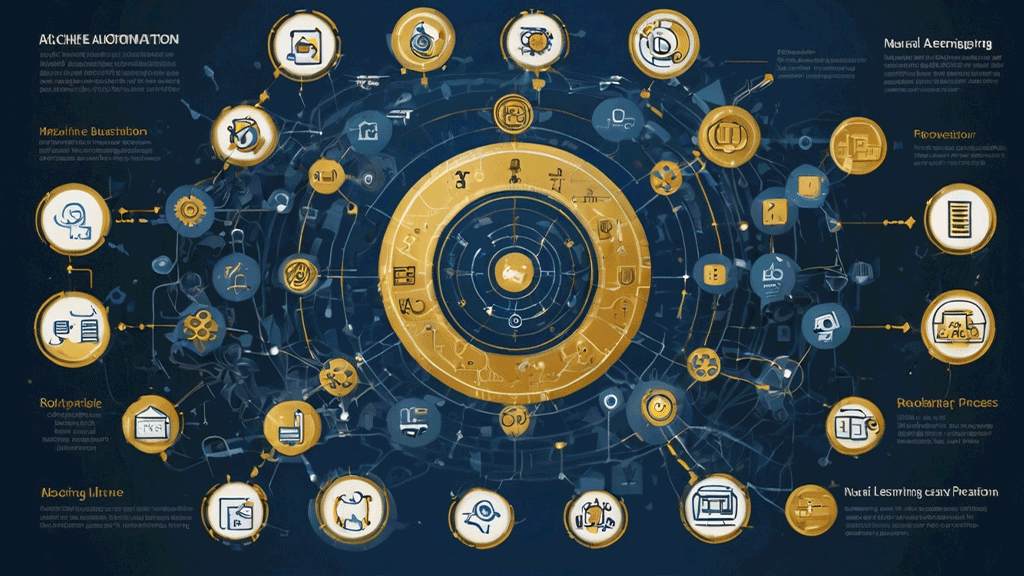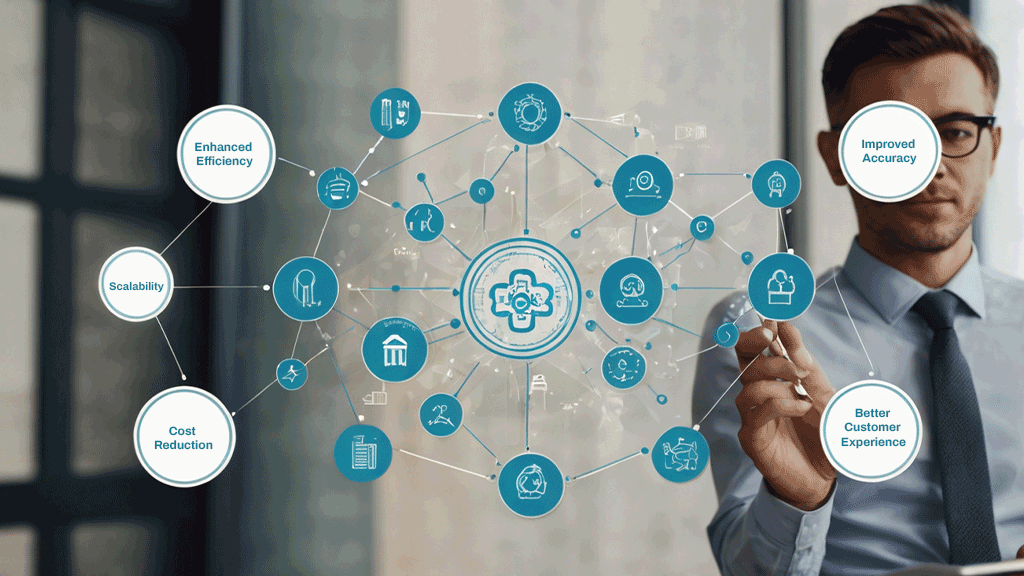AI-Powered Business Automation Solutions: The Ultimate Guide for 2025
In 2025, businesses are embracing AI-powered automation to streamline operations and boost productivity. Unlike traditional automation, AI-driven solutions can learn, adapt, and make decisions, leading to smarter workflows and reduced manual effort.
What is AI-Powered Business Automation?

AI-powered business automation integrates artificial intelligence technologies—such as machine learning, natural language processing, and robotic process automation—to automate complex tasks. This approach enables systems to analyze data, understand context, and make informed decisions, enhancing efficiency and accuracy across various business processes.
Core Benefits

- Enhanced Efficiency: Automate repetitive tasks, freeing up time for strategic initiatives.
- Cost Reduction: Minimize errors and operational costs through intelligent automation.
- Improved Accuracy: Ensure consistent and precise outcomes in business operations.
- Better Customer Experience: Deliver faster, personalized services to clients.
- Scalability: Easily adapt to growing business demands without proportional increases in resources.
You may also like to read Is AI Destroying Graphic Design?
Real-World Applications Across Industries

Customer Service: Companies like Telefonica utilize AI-powered virtual assistants to provide 24/7 support, enhancing customer satisfaction and reducing response times.
Finance: Firms such as KPMG employ AI for automated invoice processing and fraud detection, streamlining financial operations and ensuring accuracy.
Supply Chain: Logistics giants like DHL leverage AI for demand forecasting and route optimization, resulting in efficient inventory management and timely deliveries.
Human Resources: Organizations like Unilever integrate AI tools like Pymetrics and HireVue to enhance recruitment processes, ensuring better candidate matching and onboarding experiences.
Sales and Marketing: Businesses utilize AI for personalized marketing campaigns, lead scoring, and real-time pricing strategies, driving customer engagement and sales growth.
Implementation Roadmap
- Assess Needs: Identify areas where automation can bring the most value.
- Select Technologies: Choose AI tools that align with your business objectives.
- Build a Team: Assemble a cross-functional team to oversee implementation.
- Integrate Systems: Ensure AI solutions work seamlessly with existing workflows.
- Train Staff: Provide training to help employees adapt to new technologies.
- Monitor and Optimize: Regularly evaluate performance and make necessary adjustments for continuous improvement.
Challenges and Best Practices
Data Quality: Ensure your data is accurate and comprehensive to train AI systems effectively.
Integration Complexity: Plan for potential challenges in merging AI with existing systems.
Change Management: Prepare your team for transitions by communicating benefits and providing support.
Compliance: Stay updated on regulations to ensure your AI applications meet legal standards.
Start Small: Begin with pilot projects to test AI solutions before scaling up.
Conclusion
AI-powered business automation is revolutionizing industries by enhancing efficiency, accuracy, and scalability. By embracing these technologies, businesses can stay competitive and responsive in an ever-evolving market. Start your automation journey today to unlock new opportunities and drive growth.




